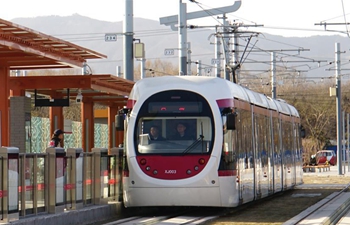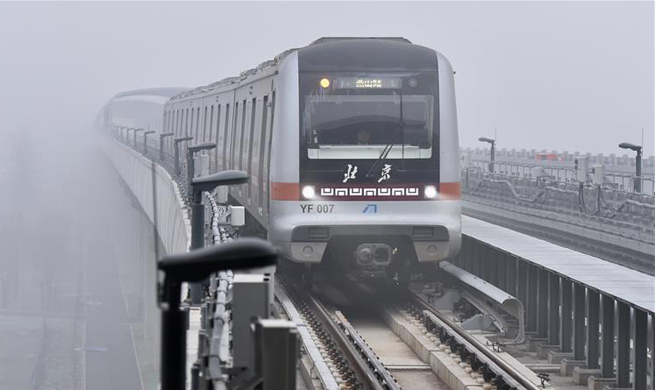by Javier Ureta
SANTIAGO, Dec. 30 (Xinhua) -- In an international context marked by great uncertainty, Latin American and Caribbean countries value the leadership China has taken on this year in defending multilateral cooperation, said a UN official.
Sebastian Herreros, an expert in economic affairs at the United Nations Economic Commission for Latin America and the Caribbean (ECLAC), said the year of 2017 saw the revival of protectionism, especially in the United States, a development that irked Latin American and Caribbean countries banking on the free flow of trade to drive economic growth.
That's why China's decisive rejection of protectionist policies, and defense of multilateralism, was of vital importance to Latin America, Herreros told Xinhua in a recent interview.
As the second largest trade partner of Latin America, China's role as a global player continues to expand in the region. And for certain key Latin American economies, such as Brazil and Chile, China is their No.1 trade partner, said Herreros.
In the wake of a global economic slowdown that impacted all regions, trade between China and Latin America is now seeing a "strong rebound" after three years of decline, he noted.
According to ECLAC's forecast, the value of goods exchange between the two sides in 2017 is set to see 16-percent growth, nearing a total of 266 billion U.S. dollars.
It's a notable recovery, since it would place this year's trade exchange close to the record high of 268 billion dollars reached in 2013.
The value of Latin American exports to China rose substantially in the past 12 months, registering 25-percent growth, "strongly influenced by higher prices for oil and other basic products, such as soybeans, and copper and iron ore," said Herreros.
"However, the situation clearly shows that the regional export basket to China continues to have a high concentration of raw materials, with very little diversification towards new products," he added.
With an eye to helping Latin America diversify its exports and boost added value, Chinese foreign direct investment (FDI) in the region has seen a "very marked increase, and is targeting a range of fields," said Herreros.
"China's direct investment in the region has in recent years begun to diversify towards sectors such as telecommunications, food and renewable energies," Herreros noted.
Around 15 percent of all FDI in Latin America this year has come from China, according to Herreros.
"It's possible to estimate investment by Chinese companies in Latin America and the Caribbean in 2017 at above 25 billion U.S. dollars," he said, with "the acquisition of major electric energy companies in Brazil, for a total of over 17 billion U.S. dollars representing the bulk of the figure."
"To put that number in perspective, China's direct investment in the region in 2017 alone is roughly equal to 28 percent of China's total direct investment in the region in the 12 years prior, nearly 90 billion U.S. dollars between 2005 and 2016," he said.
The China-proposed Belt and Road Initiative has generated a lot of interest in Latin America.
"Regional governments are interested in exploring ways that would allow Latin American and Caribbean countries to join this great initiative for shared prosperity," the official said.
The initiative is bound to dominate the agenda at the upcoming China-CELAC ministerial meeting, which will be hosted by Chile on Jan. 21 and 22.
The meeting, considered as Latin America's most important policy event of 2018, will see regional and Chinese top officials discuss ways to strengthen cooperation for mutual benefit in the areas of science and technology, social policies and environmental protection, among others.

















